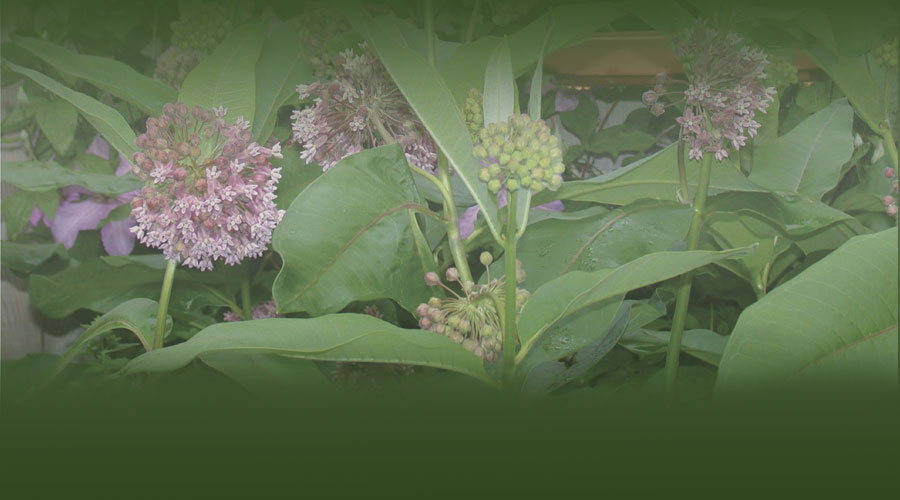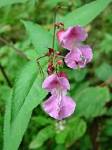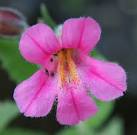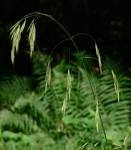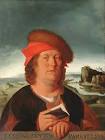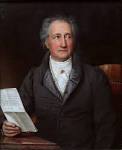This article explores
- the life of Dr. Edward Bach and his discovery of flower essences
- how to make an essence
- examples of essence use
- the historical and philosophical perspective flower essences and their use.
This is not a quick read! If you find this too long, go to a shorter article under Articles http://theflowersofaeskulap.com/cms/category/flower-essences/, or go to my blog.
If you rather listen to an interview than read, go to http://theflowersofaeskulap.com/cms/flower-essences/what-are-flower-essences-listen-to-this-ckcu-interview/
If you really want to dig deep, this article is for you. Here we go:
What are Flower Essences? When I mention that I work with flower essences, most people first think of aromatherapy. Yet flower essences are not to be confused with essential oils. They are subtle infusions made from blossoms of wild flowers or trees. They act on the body-mind interface and have a unique potential to address a multitude of imbalances and challenges as they are reflected in our emotions, and our mental and physical well-being. The oldest and best-known are the Bach Flower Essences.
Who was Dr. Edward Bach?
Who was Dr. Bach, and what led him to develop flower essences to use of his patients?
Edward Bach (1886-1936) was born near Birmingham, England. His family name is Welsh (not German like that of the famous composer J. S. Bach) a country to which he always felt connected.
Since his childhood Bach felt a deep love of nature, and he knew early on that his life’s purpose was to work in the healing arts. He also knew that healing was a matter going beyond the treatment of physical symptoms. Because of the deeply ingrained cultural ideological scission between the body on the one hand and soul and spirit on the other, he felt himself faced with the choice of either becoming a priest or a doctor. Eventually, he decided to study medicine. He graduated in 1912 as a medical doctor and settled in London, working in hospitals and in his flourishing private practice in Harley Street. (Harley Street in L held a similar status in the world of medicine in England as Wall Street has in the world of finance in New York.)
It is important to note that Bach’s skill of observation which he used as a scientist was highly developed and became the foundation for his later work. He he applied his observation not only to petri-dishes and bacterial cultures while working as a pathologist but also to nature, plants in particular, and to people. One of his early key discoveries was that
– patients differed greatly in their way of responding to diseases, and
that even in regards to standard medical treatment, patients with a similar personality would react in a similar way to a particular treatment,
– and different treatments were appropriate for different personality types.
It is fascinating to follow the stages which led Dr. Bach from being a surgeon in the casualty ward to using something as subtle as flower essences for treating his patients.
At some point he became particularly interested in trying to find a way to help patients with chronic illness. Then as today, mainstream medicine was found wanting in this respect. His research as a bacteriologist led him to realize the paramount role of intestinal toxicity in chronic illness. Eventually, he developed vaccines made from these intestinal bacteria, and obtained promising results in many cases. He knew however that he had not yet found the answers he was looking for.
Homeopathy – The Seven Bach-Nosodes
In 1919, Dr. Bach took the position of bacteriologist and pathologist at the London Homeopathic Hospital. He had discovered the work of Samuel Hahnemann, the founder of Homeopathy, and taken an interest in his work. Hahnemann was a German physician who had lived 100 years before Bach and had come to similar conclusions in regards to the underlying dynamic of health and illness.
For those readers unfamiliar with Hahnemann’s work: homeopathy is a system of healing based on the principle of “like cures like”. The disease-causing agent, if applied in minute doses and processed through the homeopathic method of potentisation, is the exact stimulus needed to shake off the disease. Lead poisoning e.g. may be treated with minute doses of homoeopathically prepared lead, an infection with the homeopathically prepared infectious agent etc.
Continuing his research on intestinal toxemia, Bach developed the seven co-called Bach-Nosodes, which eventually became widely used in allopathic and homeopathic medicine. They were homeopathic vaccinations made from a culture taken from the patient. What is important to not is Bach’s discovery that these nosodes or groups of bacteria corresponded to different personality types, indicating that people with different personality types would tend to be afflicted by different types of intestinal bacteria.
Patterns of Illness and Healing – Personality Types
In her biography of Edward Bach, Nora Weeks describes a crucial moment in Bach’s life when he attended a dinner party where he was feeling rather bored. So he spent his time observing the guests: how they moved, ate their food, talked or didn’t talk etc. He was suddenly struck by the recognition that people could be grouped according to personality types , and that people with similar personalities might react to illness in a similar manner. He first thought that the members of each group would also tend to get sick from the same type of illness, but eventually he had the inspiration that the similarities would not necessarily be in illnesses themselves, but in the reactions to the illness and to life circumstances in general. He began mentally comparing these groups to the groups of nosodes and related types that he had already discovered, but realized that seven groups were not sufficient and that further research was needed.
The First Bach Flower Essences
This episode was a Eureka moment in Bach’s work. He now set out to finding plants that would correspond to the nosodes and other personality types, and would actually replace the nosodes and take what they did one step further. Later that year (1929) he moved to Wales.
The first plants he came across in Wales which captured his attention and of which he made essences were Mimulus, Impatiens and the wild Clematis. Mimulus was indicated for people who were shy, timid and afraid of concrete things, like fear of getting old, sick of losing one’s job, of dogs, spiders, the dark, of other people, of getting sick etc.
Impatiens became the essence for the impatient personality type, for those for whom things never move fast enough and who find others irritatingly slow.
Clematis was indicated for absent-minded, distracted or day-dreaming individuals for people on cloud nine who are never really present.
Dr. Bach started to use these essences for his patients according to their personality type , and to his satisfaction, obtained good results. 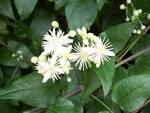
As when he had discovered the nosodes, Bach was again on the verge of a breakthrough; the first three of the 38 remedies of his new system of healing had been found.
He realized that now he had started on his real life-work, so he left his lucrative Harley Street practice in 1930, and at the age of 43 went to Wales to develop what he envisioned to be a new system of medicine.
He began to roam the Welsh landscape, spending many hours observing various plant species, their habitat and make-up. Apart from the great amount of time he spent observing the plants, we don’t know much on how Bach came to decide which plants were the healing agents he was looking for for he destroyed most of his notes. His sensitivity and perceptiveness were certainly growing during theses years.
However, if you have held out till now and would like to understand how one can detect a plant’s healing properties, I invite you to look at http://www.flowersociety.org/portraits_plant_studies.htm. There is a methodology available for research.
How are flower essences made?
In the tradition of Paracelsus and Culpepper, Bach immediately made all his findings public, placing power and responsibility into each the hands of the individual. Everyone reading this can try and prepare a flower essence. Here is how Dr. Bach himself described the process:
“A thin glass bowl is taken and almost filled with the purest water obtainable, if possible from a spring nearby. The blooms of the plant are picked and immediately floated on the surface of the water, so as to cover it, and then left in the bright sunshine for three or four hours, or less time if the blooms begin to show signs of fading. The blossoms are then carefully lifted out and then filled up with brandy to preserve the remedy. These bottles are stock, and are not used direct for giving doses.”
I have followed this method and prepared essences. It is very interesting to observe the water before and after making the essence. One can see how the light in the blossoms gradually disappears as they are exposed to the sunlight. After removing the blossoms from the bowl, and one can see the light in the water. Often plenty of small bubbles can be noticed. The energetic pattern of the flowers, their information, their essence is transferred to the water. Julian Barnard of Healing Herbs compares this process to pouring iron filings on a sheet of paper and placing a magnet underneath. The filings will arrange themselves according to the invisible pattern of the magnet and, unless disturbed will maintain that pattern after the magnet is removed. Here is where the role of the brandy comes in. The brandy assures that he healing pattern imprinted on the water is not disturbed it acts as a preservative.
Pioneering a new system of healing
After having found a few of these new essences, Bach set out to put down the principles of his new system in writing. Thoroughly trained in western medicine, yet ahead of his time, Bach stated clearly and radically his conviction that disease is the consequence of specific states of mind, that the mind was the causative factor and that disease would of necessity disappear if the underlying cause of mind, soul or spirit had been addressed. He considered disease as a “consolidation of a mental attitude” ¹
Very often this attitude was linked to living a life which was divorced from one’s true interests, being at odds with one’s work, oneself and the environment.
Further essences being discovered
Bach continued his research and eventually discovered 19 plants from which he made essences. He called them The Twelve Healers (to name a few: Chicory, Mimulus, Impatiens, Centaury, Clematis etc.) and the Seven Helpers (Vine, Wild Oat, Heather, Olive, Oak a. o.) He felt now – as he did repeatedly after having discovered new essences – that his research was at an end and that his new system of healing was complete. Yet the following year, he felt again an inner restlessness which indicated that new discoveries were laying ahead.
In (1935) he discovered the remaining 19 essences , but in a completely different way than the previous ones. What happened now was that every time he was close to finding a new essence, he would experience with great intensity the mental state that the new essence was going to alleviate, a process which often took him to the limits of his endurance. The first essence he found in this manner was Cherry Plum, which is people in extreme inner distress and tension who are afraid of losing their mind or losing control over their actions. These people feel that they are sitting on a powder keg and cannot handle any further tension, afraid they might do something awful against their will. – Cherry Plum is one of the ingredients of Rescue Remedy.
It is this type of experience that Dr. Bach had to go through repeatedly on his journey. The method of preparation of a number of these essences was different as well; mostly they were prepared by the so-called boiling method, where the blossoms and sometimes part of the twigs are boiled for a certain length of time. Here the flowering parts of the plant are put through the process of fire. Some other essences he discovered after Cherry Plum were Elm for feelings of overwhelm, Pine for guilt and self-blame, Mustard for deep gloom and others.
The Bach Flower Essences can be grouped in various ways. The first group that Bach discovered, the Twelve Healers, address emotional states that are given and often resemble type essences . Centaury for example is appropriate for people who cannot say no, Chicory for people that are overly caring and tend to take charge of other people’s life etc. They apply to a particular personality type, and sometimes they are being linked to the 12 signs of the Zodiac. The Seven Helpers are applicable when a chronic state of mind has overlaid the original personality type. It may be e. g. that someone of an Impatiens personality type, needing this as a type essence , may have become so worn out by his incessant activity that he may need Olive, an essence for general exhaustion.
By the year 1936 he had developed the 38 essences as they are known today. He felt that more was to be done and to be discovered in connection with healing of illness, yet he was not sure what this might be and whether it was to be done on the earth plane or on a other level.
The intensity of suffering and experience that were connected with the discoveries of the last remedies had taken his toll on him, and on November 27, 1936 Edward Bach died.
Literature:
1.Weeks, Nora, The Medical Discoveries of Edward Bach, Keats Publishing, N. Canaan, Connecticut- p. 57
2) Collected Writings of Edward Bach. Edited by Julian Barnard, Bach Educational Programme, Hereford, UK, 1987. – p. 47
Further examples of Flower Essences
Here are some examples how can help with
- Fears
- Learning
- Work and Life Direction
- Relationships
- Physical Healing
There is an ample choice of essences to help deal with various fears. One of the most generally applicable is the Bach essence Mimulus (Mimulus guttatus, or Spotted Monkeyflower). Mimulus addresses everyday fears & shyness: fear of the future, of poverty, other people, of harsh words etc. etc. We may be too shy to tell the waiter that the food is no good, a child may be afraid to stand up to its classmates, or we may be afraid of spiders or our neigbour’s dog. FES ( the Flower Essence Society) has developed four essences from the same genus ( the Monkeyflowers) which address more specific fears:
Pink Monkeyflower
for the fear of being seen or laughed at, e.g. on stage, or for wetting one’s bed as a child; Purple Monkeyflower for spiritual fears, e. g. when people have been members of a cult, or simply have grown up in a religion that emphasizes hell and damnation; Scarlet Monkeyflower for fear of intense emotions, particularly anger, but also for fear of encountering one’s own Shadow or darker side; and Sticky Monkeyflower for fear of sexuality and of particularly intimacy – for people that run away as soon as things get too close.
Then there are fears of a different nature where Aspen * may be called for. Aspen flower essence be of support for people who are very sensitive and feel a sense of floating fear or anxiety but don’t know what they are afraid of. Rock Rose helps with for concrete but very intense fear and panic, like in the case accidents, bad news, court cases or other situations that bring on a sense of terror.
Wild Oat is an excellent essence when we don’t know where our future lies. We may not be certain what kind of job we should be looking for, or where to find it, we may have many projects going that rarely get completed, we may not know whether we should start or end a relationship or which one from the plethora of flower essences is right for us! So often people have told me after taking Wild Oat that an area of interest they were merely contemplating became a clear choice, or they were less ambiguous whether to stay with their partner or not, or they could focus more easily at work when they had several projects to deal with simultaneously. Scleranthus can be helpful when one is dealing with two options and doesn’t know which one to choose, Pink Seaweed (Pac) can help to step out of the comfort zone into new territory, new jobs, relationships etc. Blackberry (FES) can help when one has lots of ideas but finds oneself unable to turn them into reality.
Learning essences may tie in with the above or can be used on their own. Chestnut Bud can be useful for life direction and learning in young and old. Do you find yourself drawn to the same type of partner over and over, although you are not really happy? Do you keep going to bed too late and forgetting what it was like in the morning when you got up? Do your children always forget their lunch or repeat the same spelling mistakes? Chestnut Bud can get one out of the broken record pattern, allows one wake up and move forward. Other learning essences are Cerato for not trusting one’s inner knowing and listening to others instead, for learning and study Clematis can be helpful when one daydreams drifts with one thoughts, or Madia (FES) for short attention span and lack of focus.
Flower essences can also be very helpful in relationships with others. Chicory is indicated for “super-mothers” that take care of everything and everyone around them. They can be very nurturing and a blessing to those who truly are in need; they are often very capable, devoted and know exactly what
others need. Yet they fill their own need of love through the ones they are caring for and have difficulty letting go, making the recipients of their care feeling stifled or suffocated. These “needy mothers” can also be men, and the recipient may not be a child but a parent, spouse, friend or colleague.
Mariposa Lily (FES) links us to the mother-archetype and helps to develop a deep sense of nourishment. It is often indicated to heal our own relationships with our mother, or as a mother to our children. Quince (FES) helps to be nurturing and firm at the same time, and is often indicated for single parents.
Baby Blue Eyes (FES) can restore the innocence in our relationships to our fathers, and Saguaro helps to deal appropriately with authority. Indian Pipe (Pac) helps us to maintain our individuality within a group setting, Water Violet or Mallow (FES) can help when we have difficulty making contacts or creating relationships, Pink Yarrow (FES) can shield us when we merge too much with others emotionally or energetically.
The theme of physical healing is an interesting one in this regard. Flower essences work energetically and not physically, yet often they have positive effects on our physical well-being. A client of mine whom I had given Wild Rose because of a sense of apathy and resignation, regained sensation in her right arm where she had previously experienced numbness. Another client who suffered from alopecia (circular hair loss) noticed that her hair was growing back after taking Mariposa Lily for a lack of nurturing. A young child with Down-syndrome started to sit upright after taking Redwood essence (FES). This supports Dr. Bach’s view that disease is a consolidation of an inner attitude.
Flower essences are a great tool for self-development yet should not be regarded as a substitute for medical or psycho-therapeutic c care. They yield the greatest results when used in combination with other health care modalities.
Here are some indications how Flower Essence use differs from or is similar to other modalities:
Drugs: Flower essences work energetically, not biochemically. They don’t effect change through biochemical control, they liberate us energetically from the grip of patterns of imbalance and allow transformation. While they may stir up issues and bring them to the surface, they do not impose change. Even when they have rather dramatic immediate physical effects, e. g. when applying Bach’s Rescue Remedy on a burn or insect bite this takes place via the energy field.
Herbs: Herbal remedies have in common with flower essences that they both use natural (herbal) substances. Herbal remedies can be prepared from various plant parts and have mainly physical effects. They are selected on the basis of physical ailments. Herbs also have ceremonial uses. We are all familiar with the traditional use of Holly, Ivy, Mistletoe, of Roses as a gift, or of tobacco and sage in indigenous traditions. This reflects that plants used as herbs can carry spiritual properties. Flower essences appeal directly to the capacity of plants to allow transformation on the soul level.
Aromatherapy: Essential oils are concentrates made from the whole plant and are applied externally. They work from the body into deeper levels. Flower essences are potentized dilutions made from blossoms only
There are certain parallels between homeopathic preparations and flower essences. Both are vibrational in nature and applied in dilutions. But homeopathy makes use of many parts of a plant to make a remedy, and it can use mineral or animal substances as well.
Homeopathy also tends to address particular pathologies whereas flower essence use will attempt to restore balance to patterns of stress in general.
___________________________________________________
*Unless marked otherwise, the essences are from the line of Bach remedies.
How do we discover the healing potential of a plant?
After having explored the history of flower essences and some of their more specific uses, the question still remains: How do we know whether an essence can be made from a plant, and if yes, what kind of properties it will have?
Not much is known about how Dr. Bach went about to uncover the healing potential of plants, as he destroyed most of his notes. We know that he was a trained scientist and an excellent observer who would often spend hours with certain plants, and we also know that particularly in his later life he was very intuitive, able to sense their healing potential. Yet how exactly did he create the bridge between these two? How does the description of a flower essence relate to what we see in front of our eyes as the living plant?
This question even applies to a plant’s herbal properties. Have you ever asked yourself why Chamomile has a soothing, anti-inflammatory effect, or why Sage helps with sore throats? Sure, we can look at the chemical constituents and they will give us some explanation. This is very helpful and informative, but it doesn’t make the link to the plant as we see it in front of us, it doesn’t tell us how people found out about the properties of plants before chemical analysis was possible, nor does it explain the effect this plant may have as a flower essence.
Plant knowledge – A historical perspective
In this context it is helpful to take a historical look at how humanity gained knowledge about plants in the past.
Science as we are familiar with it today is at the most a few hundred years old. It requires us to be separate and detached from our environment, something that would have been unthinkable in humanity’s past. Knowledge of the plant world however is ancient. Esoteric teachings suggest that in prehistoric times, mankind possessed a natural clairvoyance and an instinctive/intuitive perception of the natural and spiritual world around them. People were able to perceive the life of a plant and experience its qualities. Animals still know what plants they need, without any studies or analyses. These older faculties died away over time and people had to rely on medicine men or shamans to obtain deeper knowledge healing. Eventually, awareness and perception of the soul-spirit world in the human being , nature and the universe faded away almost completely in the western world, and gave rise to a purely materialistic outlook that considers consciousness as a product of matter.
Ancient Greece
Where are the origins of modern botany? Its germinal beginnings can be found in ancient Greece. (As the scientific approach is basically a western phenomenon, I will focus on the western tradition). One of the important figures in this respect was a pupil of Aristotle, Theophrastus, who attempted to classify plants into groups. This was shortly after the birth of Greek philosophy in the 6th century B.C. It is important to note that Greek philosophy was not dry intellectual speculation, but a pursuit closely connected to the old Mystery Schools and initiations. Philo-sophia means Love of Wisdom, and to the Greeks it signified the attempt to understand cosmic wisdom and the world of Ideas or Spiritual Archetypes, of which the physical world was a manifestation. This germinal botany included therefore the effort to understand the cosmic forces and laws manifested in the plant world.
Renaissance – The Alchemical Tradition
Interest in systematic observation of plants resurfaced in Renaissance. Theophrastus’ studies functioned as a precursor to the still used classification system of the Swedish scientist Linnaeus (Carl von Linné, 1707-1778), which is based on observation and division of plants into genera, species, families etc. Today, genetic classification and computer analysis are coming more into use. The latter, like much of modern science, embraces the reductionist world view (i.e., reducing the world to a collection of molecular etc. compounds) that leaves no space for meaning.
Yet there are other traditions that can help us form a bridge. One of them is the Alchemical Tradition. The first thing that may come to mind when hearing of alchemy may be “Oh yes, the alchemist tried to make gold out of lead.” This is a very crude interpretation of the path of transformation inherent in alchemical processes. The saying of the Egyptian initiate Toth (Hermes Trismegistos) “As Above, So Below” is fundamental to the alchemical understanding that the earth and the spiritual world form a whole, or as expressed later in Rosicrucianism, the microcosm of man and the macrocosm of nature form a whole, and are reflected in each other.
This thought already gives us an understanding that what we see in the plant world is not just a haphazard collection of forms, shapes and biochemical constituents amongst which we, another collection of shapes and constituents, happen to find ourselves, but that there is an inner relationship between the two. This is the key to the fact that a particular plant will have the effect in humans which it actually does have.
The Swiss physician Paracelsus who was strongly influenced by
alchemist/Rosicrucian thinking, developed this further in the “Doctrine of Signatures” This teaching stated that physical characteristics of a plant, like shape and form of the blossom, hair growth, habitat etc. had parallels in human anatomy and were indicators of its therapeutic use.
The Archetypal Plant – Unity in Diversity
As materialistic science experienced an upsurge in the 18/19th centuries, alchemy was pushed into the background. Yet during the dawn of modern science in its materialistic form, another model of science was developed by the German poet and scientist Johann Wolfgang von Goethe (1749-1832). Goethe is best known for his drama Faust and other literary masterpieces, it is less well known that he was also a scientist and did research in geology, botany and the theory of colour. During a trip to Italy, when he encountered many plants unknown to him, Goethe came to develop, or maybe one should say to discover the concept of the Archetypal Plant, “Urpflanze” in German, as the Idea or creative source of all existing plants, and even those that did not yet or no more exist. This Original or Archetypal Plant is a spiritual archetype, much like the Ideas of Greek thought, and expresses itself in all the existing plants through the metamorphosis of its parts; it is the Unity holding together the plant world’s diversity.
Goethean Science
Goethe saw plants as living manifest ideas, and out of his thought grew a methodology also called Goethean science. It is here that we can find a bridge from the measuring, numbering, quantitative approach of materialistic science to an understanding of nature that includes quality and meaning, yet remains objective: Starting by accurate observation of what we can see with our eyes (and with our other “five” senses) and therefore is considered “real” even by natural science, we then make this perception an inner experience. We cannot only observe and count the number of stems, leaves, petals etc., we can also experience the straightness of the Pine or the gnarled forms of the Oak, the winding, climbing movements of the vines, the five-pointed star forms we find in many flowers of the rose family, the square solidity of the stem of a mint, or the concentric order of a Sunflower or Daisy.
Participatory Science
This methodology has often been called participatory science. To modern science ( not to truly modern science, but to 19th century science which is still the prevailing paradigm in many scientific circles), participation of the observer is anathema. In Goethean science, participation is a path to knowledge. What has been observed in the outer world is recreated as an inner picture, and an inner response arises, a step which Goethe called “exact imagination”. This prevents projection of our own inner world onto what we see, but makes our soul a canvas an instrument of cognition.
This process has to be repeated many times with one plant, and as a path of observation takes practice. Yet the results are inspiring and exciting, it is as if the book of nature which had been a book of hieroglyphs up to know started to speak!
Looking at plants
If you want to try this approach, you need to look at the plant from a variety of angles. What kind of gesture does the plant have? Does it have the uprightness of a Mullein plant, or the tallness and straightness the Sunflower, but with a head that is bent? Does it like to stand alone like both of these plants, or does it form a carpet-like growth of like the Spreading Phlox? Is the gesture of the whole repeated in the parts, like in the cone of the Pine tree, or do they differ? In flowers we first notice the colour, but also the shape of the flowers. Does the flower form a cup like the Tulip, does is radiate outward like a star Like Star of Bethlehem, or does its flower head form a bell, like Foxglove or Bluebell? Do its flowers look like a mouth, an organ (like in the orchid family), or an insect? What is the plant’s connection to the earth, is it rooted loosely like the Lily family, or does it have strong roots like most of the members of the rose family and particularly the blackberry? Does the plant like shade or sun, water or dryness? What is the relationship to the insect world? Does it feed insects, or does it trap them, like the California Pitcher plant, which helps us as a flower essence to be more in tune with our instinctual nature? Yet we must not only observe a plant in the snatch of the moment, its totality can only become evident when we observe it in time. Does it grow fast like the Impatiens, is it an annual or a perennial sometimes reaching the age of hundreds of years like the Redwood or some Oak trees?
Ceremonial uses of plants (like tobacco) or the mention of plants in mythology and folklore can reveal additional aspects. As important as these are the herbal and chemical properties of plants. The discoveries that modern botany has made are very important and give tremendous insight to understand the plant, yet they are part of a larger picture. – I could go on endlessly mentioning aspects to look for in the plant kingdom, their variety and “the ideas nature comes up with” never ceases to amaze me.
What is important is to look at the plant from various aspects and then let a picture arise in one’s mind. The image is not physically visible, it is our inner response or to what we have observed in the physical world. Then we go back and forth in this process, forever refining our impressions.
Everyone is capable of doing this, one does not need to be able to see auras to come to this type of understanding. However, sensitive attunement and other impressions of a non-physical nature can yield valuable information, again as part of a larger whole. A procedure I have found valuable is to go through the process of “exact imagination” first, then put it aside, attune to the plant afresh and let is speak to me. Both parts of observation put together often yield amazing results.
Before I give a more detailed example, I wish to make clear that this process is one of the avenues to gain insight into the effects of a healing essence. As important is clinical observation, meaning the results observed when giving an essence to many people and clients. Often only the gathering of a large pool of data will fully reveal what an essence can do. And, for the scientifically-minded in the traditional sense of the word, studies like those of D. Jeffrey Cram using surface Electromyography to study the effects of essences are also available. (eg http://www.flowersociety.org/Thelightstudy.pdf )
Dandelion Flower Essence
Now let us look at a specific plant and its qualities as flower essences. I have chosen the dandelion as a more detailed example, as everyone knows this plant.
Dandelions are some of the first flowers coming out after the winter. When they are not considered weeds but allowed to grow, they cover the earth with a carpet of golden yellow, as if lots of little suns had come to earth after the long winter. The dandelion plant forms very deep tap roots, solidly connecting to the earth and its darkness. If you want to uproot them, you need special tools! The roots are rich in calcium, which indicates a tendency towards crystallization. When you look at the leaves, you will notice that they are arranged in the form of a rosette, and they have a serrated and “bitten-into” shape. The more the plant is exposed to light, the more edgy and serrated the leaves become. Here we can watch the influence of the light, modifying the shape of the leaves. Here in the leaves, one can see the darkness from the earth and the light from the sky meeting and opposing each other, in an interplay. Then, a composite yellow flower appears on a single stalk. The flower responds to light, opening only when the sun is shining. In botanical classification, the dandelion belongs to the composite family like the daisy, the sunflower, Echinacea etc., yet it has only so-called “ray florets” (the yellow petals), it does not have a central disk like the other Composites, and which is so striking in the sunflower. It doesn’t have this particular type of centre but rays outward, the language of the yellow flower is very extrovert. The flower is rich in silica. Silica is not just a chemical substance, but also a carrier of sensitivity to outer influences. So we find this sensitivity in the silica, and the hardening, the tendency towards calcification in the root. Now this polarity coming from above, moves down into the root via the milk in the stem, modifying even the soil where the plant grows. Here we have the play of opposites mediated by the stem. Again the polarity appears in the fruit of the dandelion, the white airy puffballs.
As a flower essence Dandelion is used for people who have a great zest for life, but may go to excess and demand too much of their bodies, thereby creating tension particularly in the muscles and tendons. It helps to move from a perspective of overdoing towards a certain lightness of being. It can be used for people who over-schedule themselves, for tensions held in the muscles, teeth grinding etc.
In the above description, for the sake of space, observation and interpretation are very much combined, two steps one would hold apart in in-depth plant observation. However, to explore this fascinating theme of “Form and Function”, I recommend the following sites and articles for further reading:
On the FES website:
- the excellent plant studies of Yarrow, an essence used to shield us energetically, the indications of the Impatiens plant by Julian Barnard, a basic essence of impatience at or a study of the fascinating Joshua Tree, from which is made an essence that can help free us from cultural, generational and hereditary conditioning and allows us to become individuals at http://www.flowersociety.org/JT_Signature.htm, or my own plant study on Milkweed, one of my favorite plants www.flowersociety.org/Milkweed–Plant–Study.htm.
You can find many more plant-essence descriptions on this site if you follow the links.
